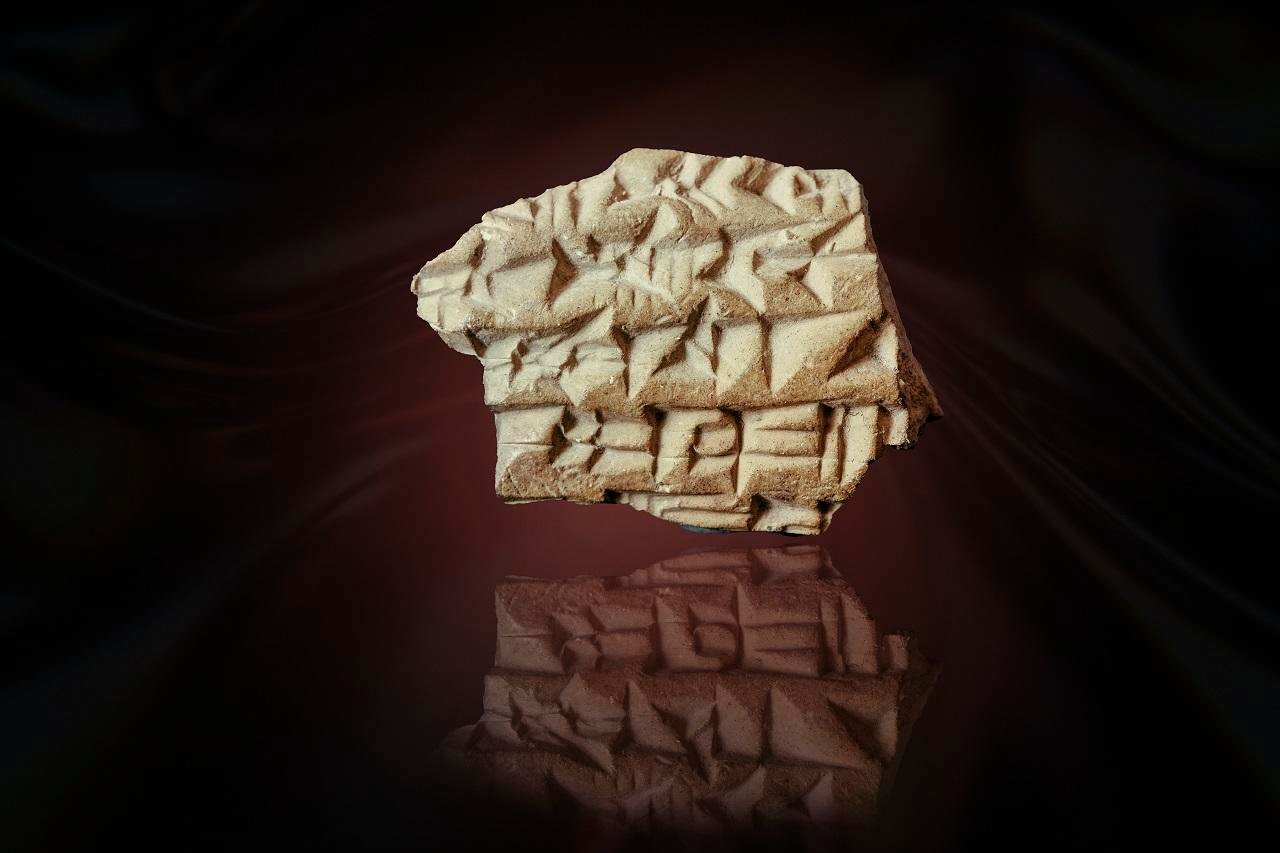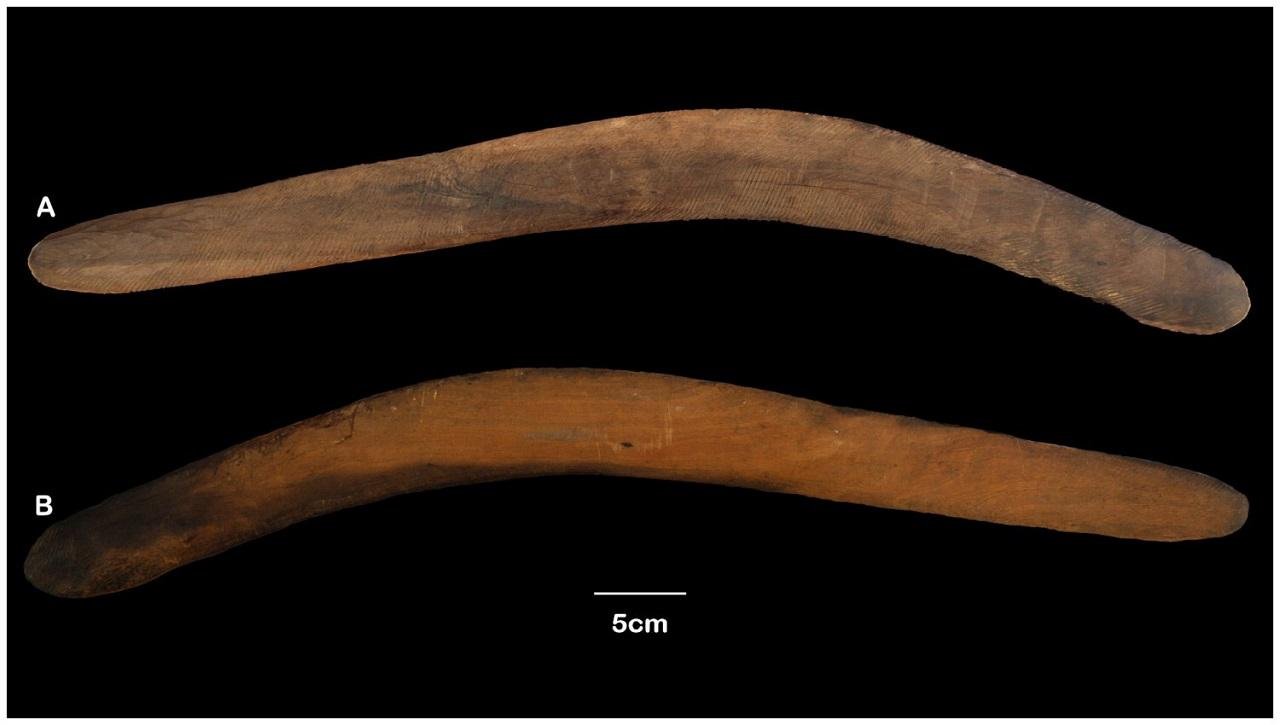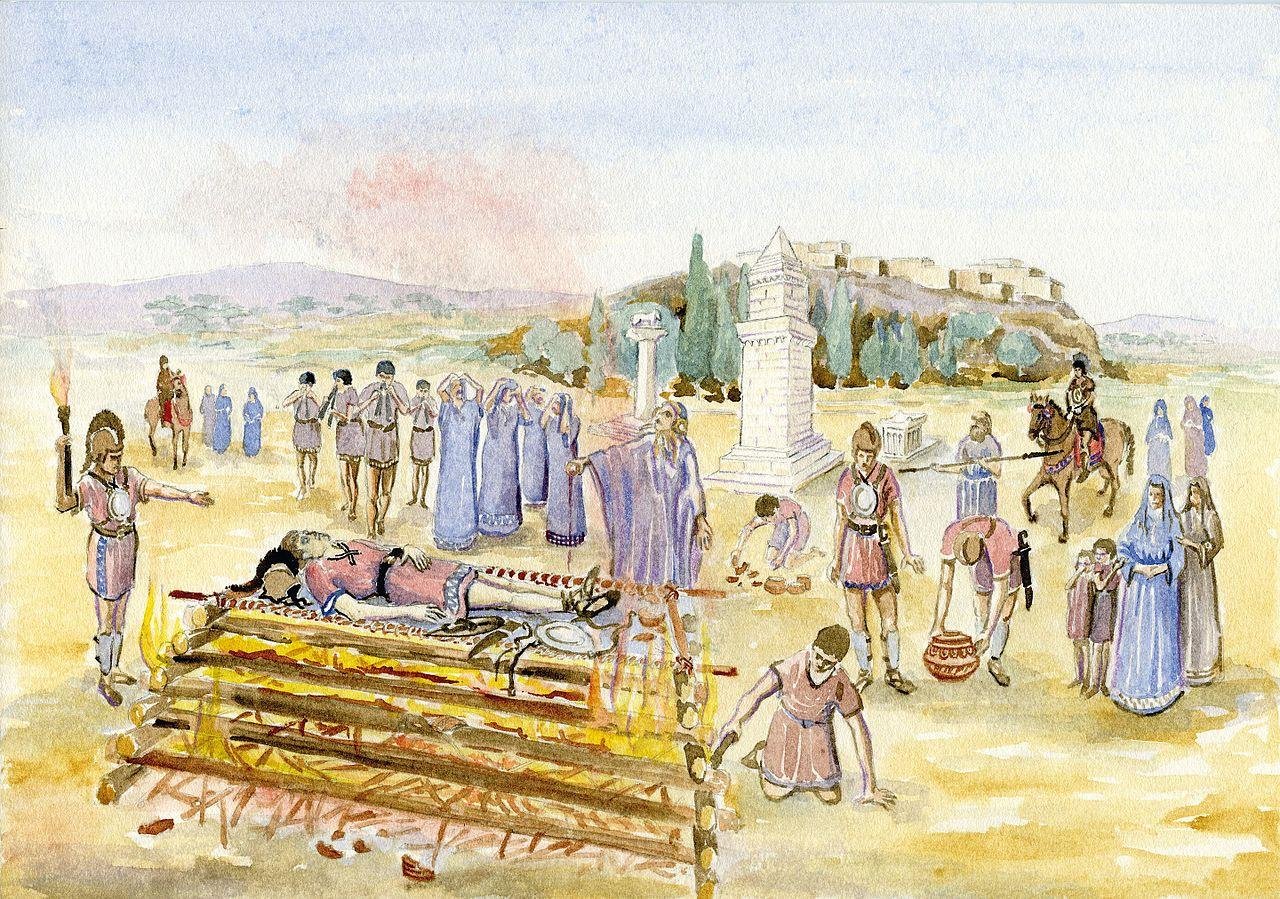Archaeologists excavating in northern Vietnam have uncovered rare evidence of violent conflict in prehistoric Southeast Asia. The skeleton of a male, dating to about 12,000 years ago, reveals that he had been struck by a projectile tipped with a stone point. Although he survived the initial attack, the wound eventually became fatally infected, researchers reported in a recently published paper in Proceedings of the Royal Society B: Biological Sciences.
 TBH1. (a) Collapsed skull in preparation for block-lifting, (b) skull after reconstruction, (c) representative west-facing section, showing calibrated radiocarbon dates (calibrated before present (cal. BP)) and stratigraphic position of TBH1 and, (d) exposure of post-crania prior to recovery. Arrows indicate north. Reconstruction: A. Wilshaw; pH๏τographs and drawing: C. M. Stimpson. Credit: C. M. Stimpson et al., Proceedings. Biological Sciences (2025)
TBH1. (a) Collapsed skull in preparation for block-lifting, (b) skull after reconstruction, (c) representative west-facing section, showing calibrated radiocarbon dates (calibrated before present (cal. BP)) and stratigraphic position of TBH1 and, (d) exposure of post-crania prior to recovery. Arrows indicate north. Reconstruction: A. Wilshaw; pH๏τographs and drawing: C. M. Stimpson. Credit: C. M. Stimpson et al., Proceedings. Biological Sciences (2025)
The skeleton, known as TBH1, was discovered between late 2017 and early 2018 in Thung Binh 1, a cave within the Tràng An Landscape Complex of Ninh Binh Province, Vietnam, a UNESCO World Heritage site. The man’s body was discovered in a fetal position with his face resting on his hands, which indicates respectful and deliberate burial by his community. Despite the crushed skull, the scientists managed to reconstruct the majority of the cranium and teeth, and the rest of the skeleton was very well preserved, given its age.
TBH1 was about 35 years old when he died toward the end of the Terminal Pleistocene, approximately 12,500 to 12,000 years ago. A more detailed osteological analysis returned an unexpected result: an extra rib near his neck, a condition present in fewer than one percent of humans. The supernumerary rib had signs of trauma and infection in the shape of a drainage gap caused by pus. Next to this rib, the scientists discovered a small triangular quartz flake measuring no longer than 18 millimeters. The flake contained modifications that suggested it was used as a notched barb on a projectile such as an arrow or dart.
Christopher Stimpson, a zooarchaeologist at the Natural History Museum in London and co-author of the study, told Live Science that where the stone fragment was embedded and the way the rib was damaged strongly suggest that the man was struck in the neck or upper chest. “TBH1 lived for several months after the injury occurred,” the authors wrote, stating that if it were not treated, infection would have ensued, leading to death weeks or months later.
 Elements of TBH1 in anatomical position. Scale: 10 cm. PH๏τographs: C. M. Stimpson; reconstruction: A. Wilshaw. Credit: C. M. Stimpson et al., Proceedings. Biological Sciences (2025)
Elements of TBH1 in anatomical position. Scale: 10 cm. PH๏τographs: C. M. Stimpson; reconstruction: A. Wilshaw. Credit: C. M. Stimpson et al., Proceedings. Biological Sciences (2025)
The research also has broader implications. Morphometric analyses linked TBH1 to the region’s Late Pleistocene populations more definitively, while genetic sequencing provided the earliest mitochondrial DNA ever recovered from Vietnam. His DNA belonged to the M macrohaplogroup, which connects him to ancient hunter–gatherer groups of South and Southeast Asia. They are part of controversies regarding the ancestry of modern East Asians, who are possibly a mixture of indigenous Southeast Asian hunter–gatherer groups and more recent agricultural immigrants from the north, according to experts.
The quartz point embedded in the rib of TBH1, which is foreign to the Southeast Asian local archaeological record, indicates the possibility of intergroup conflict among hunter–gatherer groups. This is the earliest evidence of interpersonal violence in mainland Southeast Asia, according to the researchers.
Although his death came under grim circumstances, TBH1’s survival for months after his wound shows that he was well cared for by the members of his group, who later buried him in the cave with respect.
More information: Stimpson, C. M., Wilshaw, A., Utting, B., Mai Huong, N. T., Hao, N. T., Vu, D. L., … Rabett, R. J. (2025). TBH1: 12 000-year-old human skeleton and projectile point shed light on demographics and mortality in Terminal Pleistocene Southeast Asia. Proceedings. Biological Sciences, 292(2053). doi:10.1098/rspb.2025.1819




